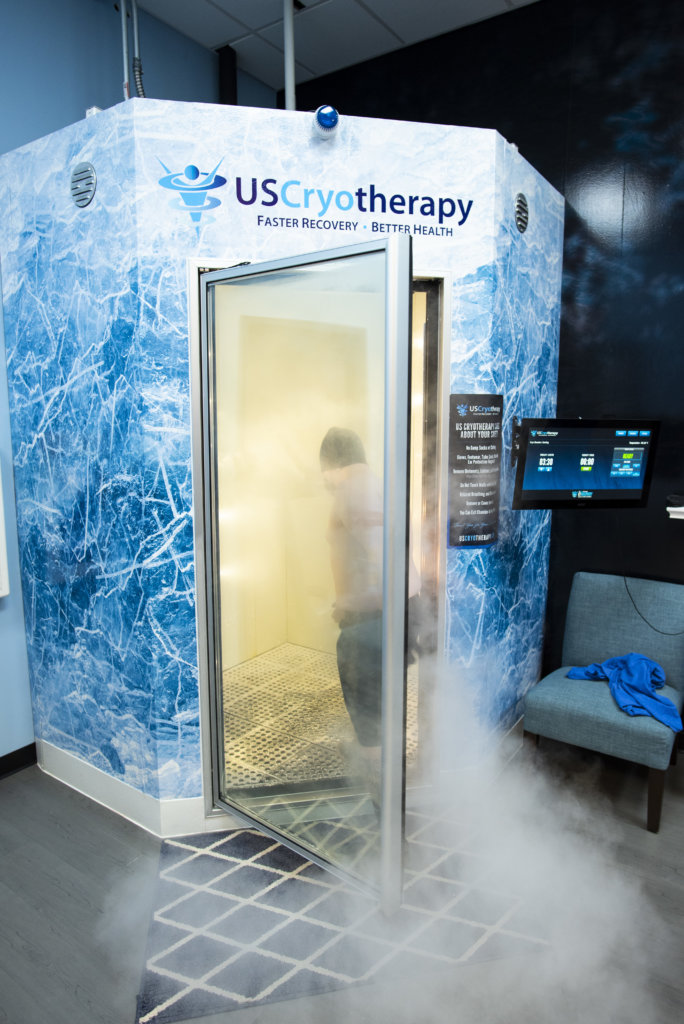Don’t Enter the Summer Injured
Summer provides ample opportunities to rejuvenate your fitness routine, whether you are hitting the hiking trails, the gym, or the court. But those physical activity and exercise plans may be hindered by a lingering athletic injury. However, there may be a simple solution to increase your chances of not entering the summer injured: cryotherapy.
Cryotherapy, a treatment that uses subzero temperatures to treat pain and injuries, is a more comfortable and quicker alternative to traditional ice baths. Athletes like the Minnesota Vikings, Floyd Mayweather, Lebron James, and Usain Bolt all swear by the effects cryotherapy has on their recovery time.
Why should I use cryotherapy to treat my injury?

Any athlete or person who exercises is exceptionally prone to soreness and exercise-related injuries. Cryotherapy is able to help soreness and injuries in multiple ways.
Cryotherapy stimulates the nerves on your skin through extreme cold, triggering your central nervous system and, in turn, enhancing your circulation.
Increased circulation allows your blood to move in and out of inflamed areas faster, accelerating the healing of injured areas.
Health professionals have begun using whole-body cryotherapy to relieve pain and inflammation and athletic injuries, according to Forbes.
Breaking it down further, multiple areas of your body react after entering the chamber.
- The hypothalamus releases endorphins and norepinephrine, which serve to block pain signals, boost your mood and energy, and work as an anti-inflammatory.
- Blood travels from the extremities to your vital organs.
- As your skin rewarms, the blood, high in oxygen, nutrients, and chemicals, returns to sites of injury and inflammation for repair.
Many users have reported pain relief and muscle healing, improved range of motion, reduced pain and inflammation, enhanced mood, and more energy.
Along with whole-body cryotherapy, localized cryotherapy will help an injured area. Localized cryotherapy speeds up healing on a specific area of concern. This process also triggers a systemic anti-inflammatory response, reducing pain and inflammation, improving circulation, and boosting the body’s metabolic rate.
How do I know it works?

You might have doubts about the validity of stepping into a futuristic-looking cold chamber and “magically” having some of your problems solved, understandably. But don’t worry, there is empirical evidence to back this popular craze up.
A study published on PubMed Central found that alongside its therapeutic effects, whole-body cryotherapy has been shown to be a preventative strategy against the damaging effects of exercise-induced inflammation and soreness. The conclusion of the study found that pain, soreness, stress and post-exercise recovery is “very often improved compared to either the starting condition or the untreated matched group.” The subjects’ assessments stated their symptoms and pain had significantly improved, even when compared to other recovery strategies. Optimal results were yielded after 20-30 sessions.
Another study published on PubMed Central found that trained runners showed fewer blood markers of inflammation after entering the cryotherapy chamber. The study followed a group of trained runners and put them through a 48-minute trail run on a treadmill. The workout was specifically designed to elicit muscle soreness and damage.
After the workout, half of the runners underwent whole-body cryotherapy once a day for five days. The rest sat still for 30 minutes a day after their workout for those five days. Blood was drawn regularly throughout the experiment from both groups.
From the first day onward, the runners who entered the chamber showed fewer blood markers of inflammation than the group who sat still.
The study showed that by using the therapy, tired athletes could return to training sooner, said François Bieuzena, a professor at the National Institute of Sport, Expertise and Performance in Paris and lead author of the study.
Don’t enter summer injured, try cryotherapy today.
